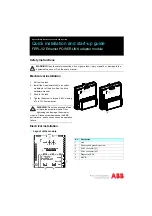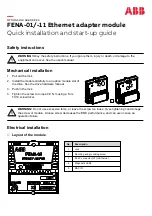Summary of Contents for 3340 VCO
Page 1: ...Electrosmith 3340 VCO MU Build Guide 1 ...
Page 4: ...Build 4 ...
Page 5: ...Build 5 ...
Page 6: ...1 Power Header 6 ...
Page 8: ...8 ...
Page 9: ...Once soldered clip the pin labeled K from the power header 9 ...
Page 10: ...2 Link Headers 10 ...
Page 12: ...12 ...
Page 14: ...14 ...
Page 15: ...3 Submodule 15 ...
Page 16: ...Connect the female and male headers together 16 ...
Page 17: ...With the board face down insert the female headers into the 1MU PCB 17 ...
Page 20: ...20 ...
Page 21: ...4 Jacks and Pots 21 ...
Page 24: ...Install the front panel so that all of the jacks and pots fit into their holes 24 ...
Page 28: ...28 ...



































